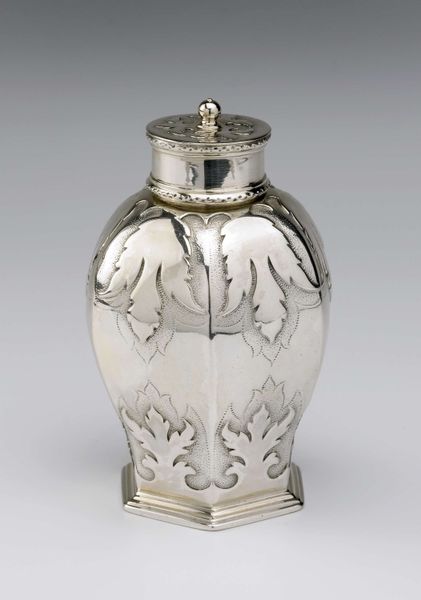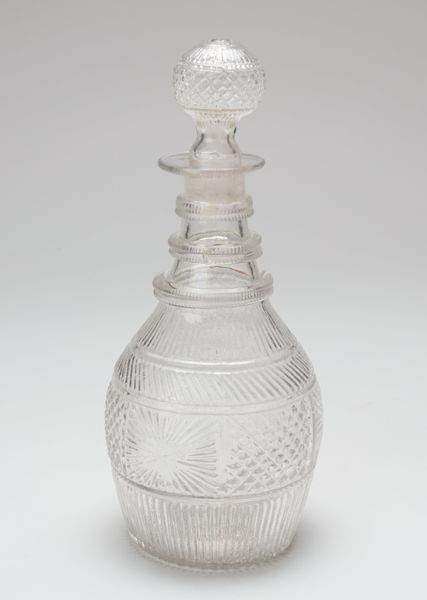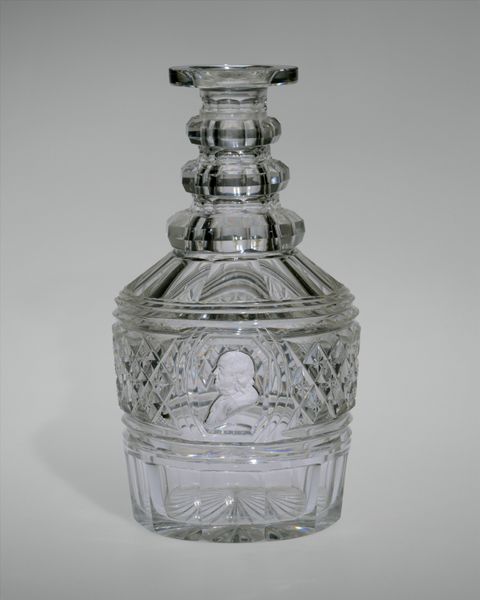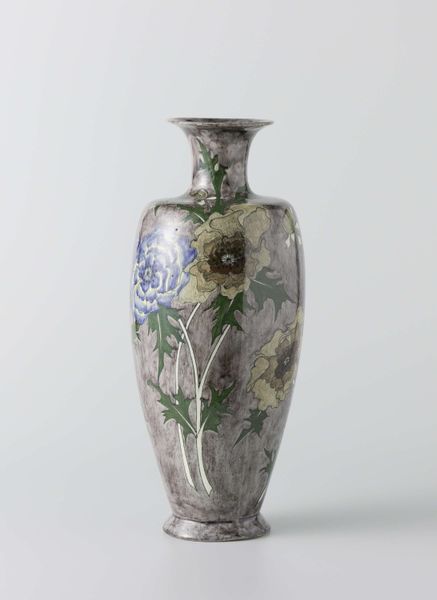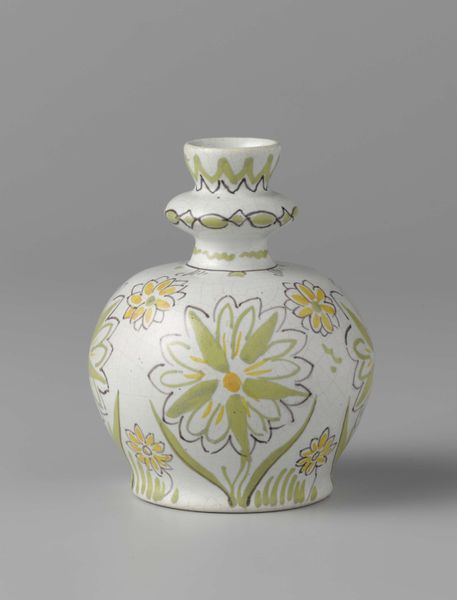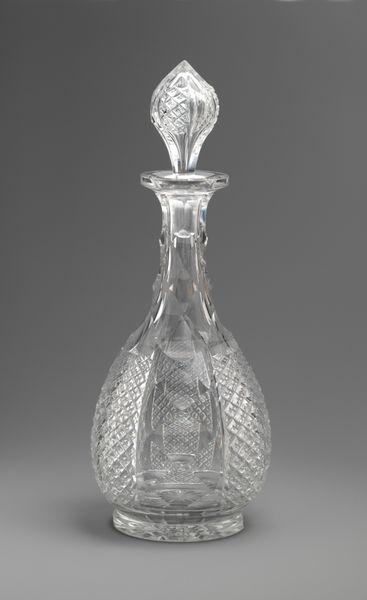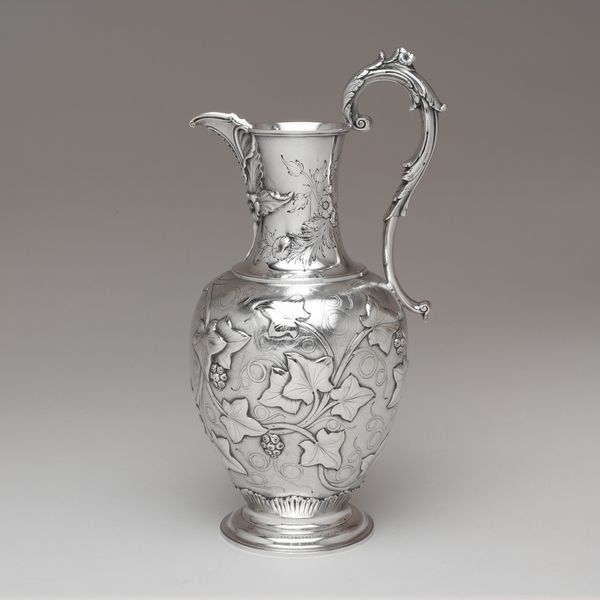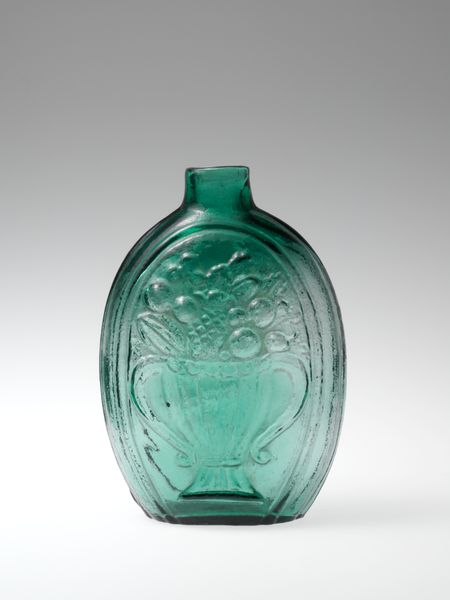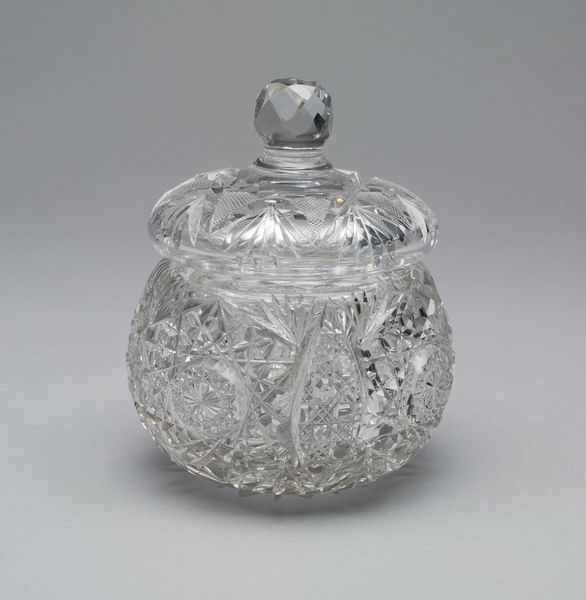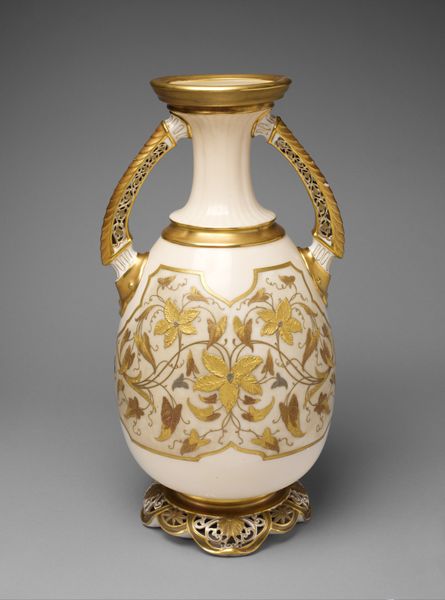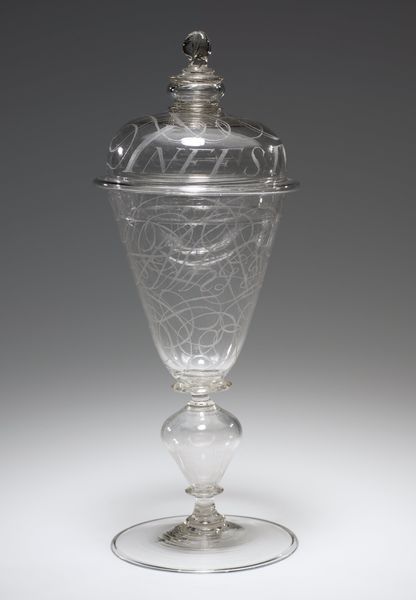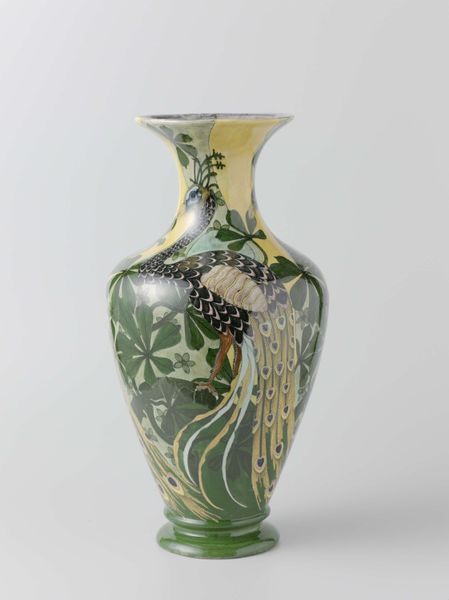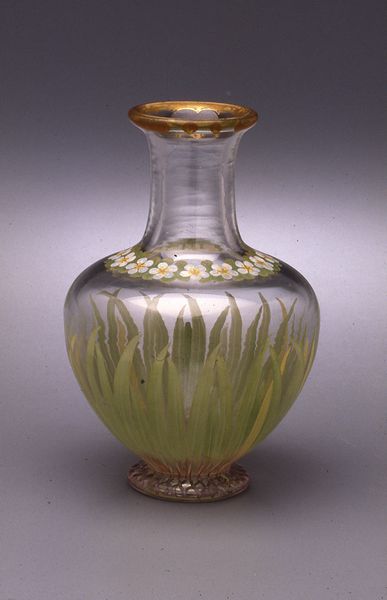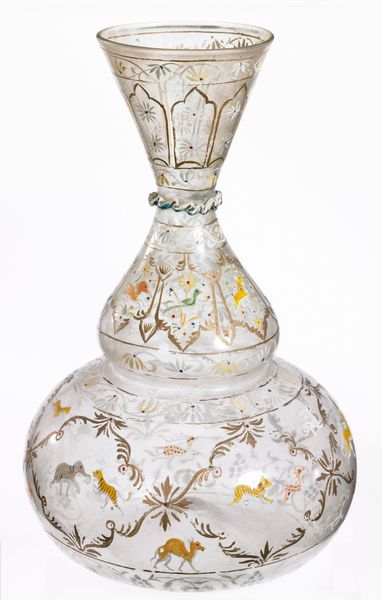
ceramic, porcelain, sculpture
#
ceramic
#
porcelain
#
form
#
sculpture
#
ceramic
#
decorative-art
Dimensions: confirmed: 12 3/8 × 6 15/16 × 6 15/16 in. (31.4 × 17.6 × 17.6 cm)
Copyright: Public Domain
Editor: This lovely object is titled "Vase with rope and wheat decoration" created in 1864 by Minton(s). It's crafted from ceramic and porcelain, and it's currently housed at the Metropolitan Museum of Art. The overall feeling is quite serene, and I am interested in how those specific design motifs, the rope and wheat, tie into that feeling. What do you see in this piece? Curator: Well, let's start by thinking about the historical context. 1864 was a time of significant social and industrial change. How might agricultural symbolism like wheat have resonated during a period of rapid urbanization? Editor: I suppose wheat, as a symbol of harvest, could represent ideas of plenty and abundance at a time when that couldn't be taken for granted. What about the rope? It contrasts with the naturalism of the wheat. Curator: Exactly. Rope implies maritime culture, industry, but also restriction. How does this contrast with the delicate porcelain material, a luxury item only afforded by an elite class? This juxtaposition could represent class tension or aspirations of social mobility. Do you see any other symbols related to status here? Editor: The fact that it's a decorative vase implies luxury as well. It is not a simple pot for holding wheat; it’s about showing it off, celebrating a bounty. And it makes me think about labor, too: Whose labor harvested the wheat? Curator: Precisely! We have to consider who is absent from the frame. Porcelain production involved extensive labor and trade networks, including child labor. By examining those silences, can art reveal hidden histories? Editor: I hadn’t considered all those layers. So, a seemingly simple vase becomes a reflection of broader socio-economic issues and even gender roles, as wealthy women could use objects like these to enhance their status. Thanks, it really does give one pause. Curator: That's the power of contextual analysis. By acknowledging those intersectional relationships, art becomes an act of witnessing, compelling us to address and redress ongoing systemic inequalities.
Comments
No comments
Be the first to comment and join the conversation on the ultimate creative platform.
